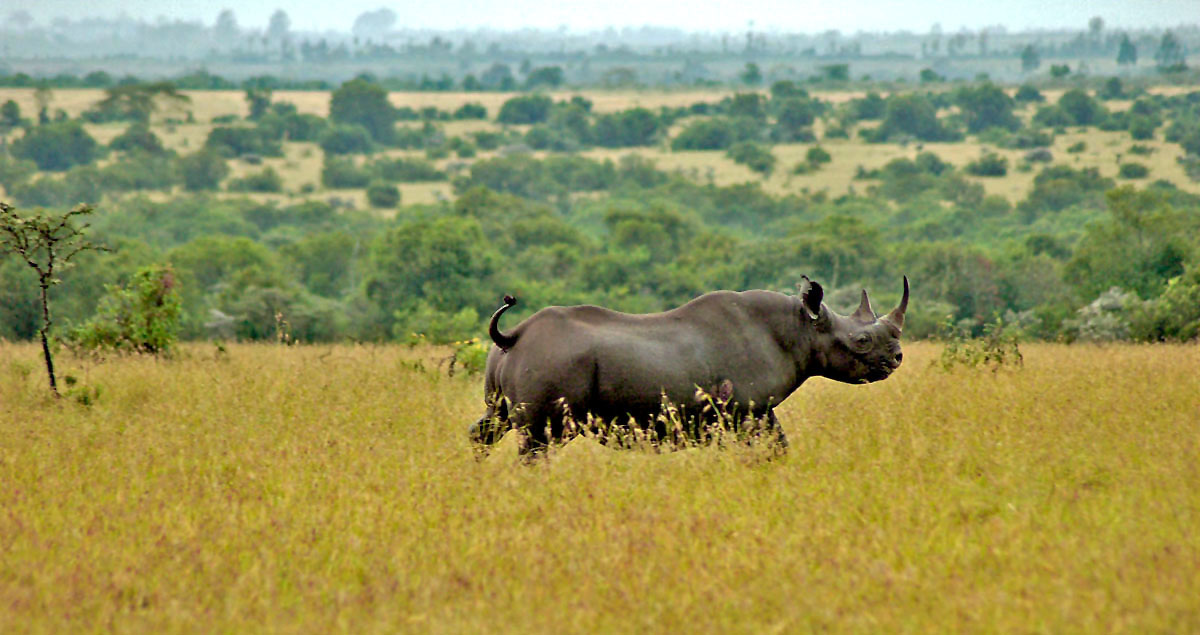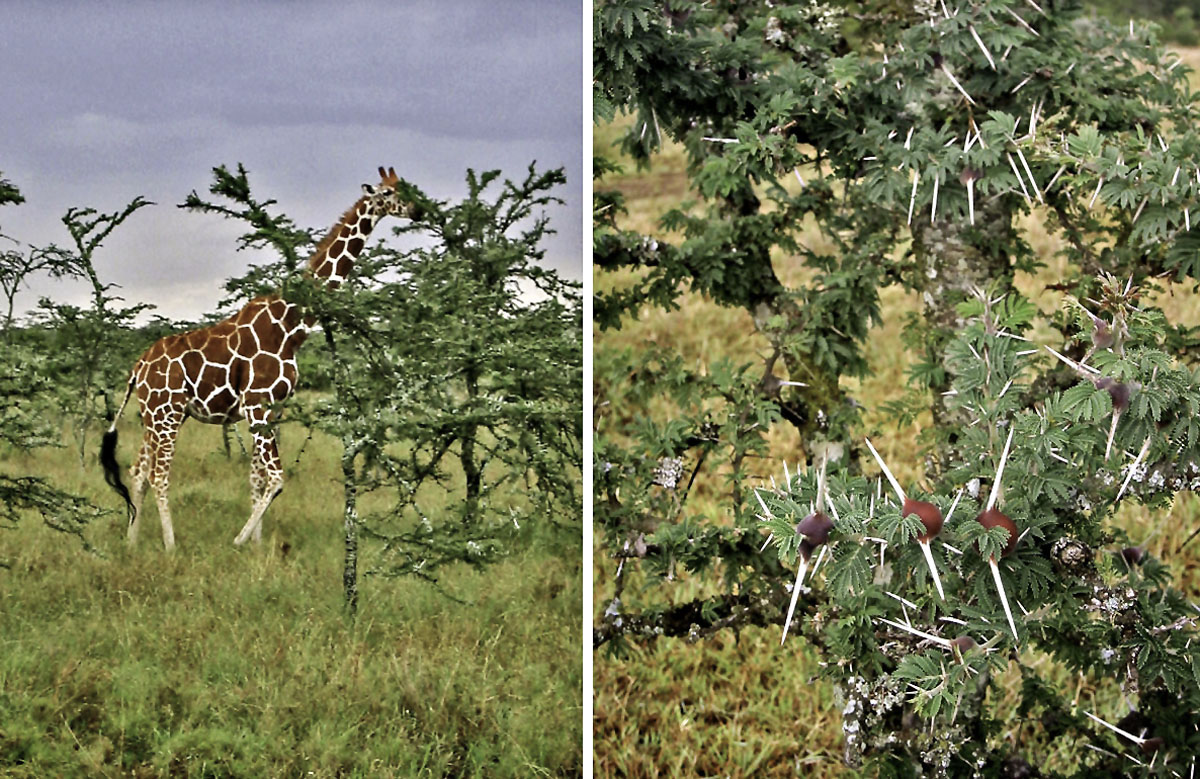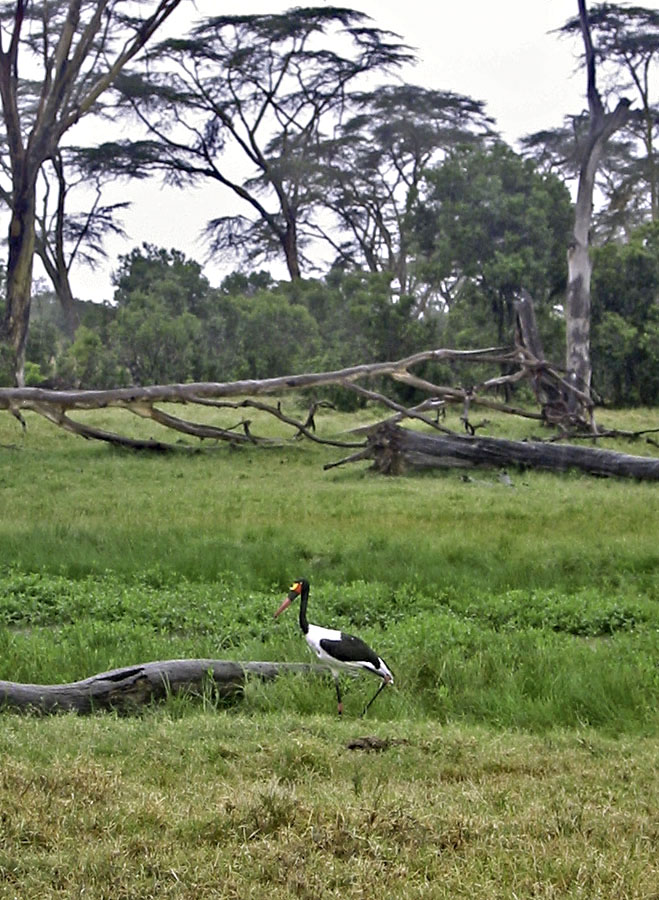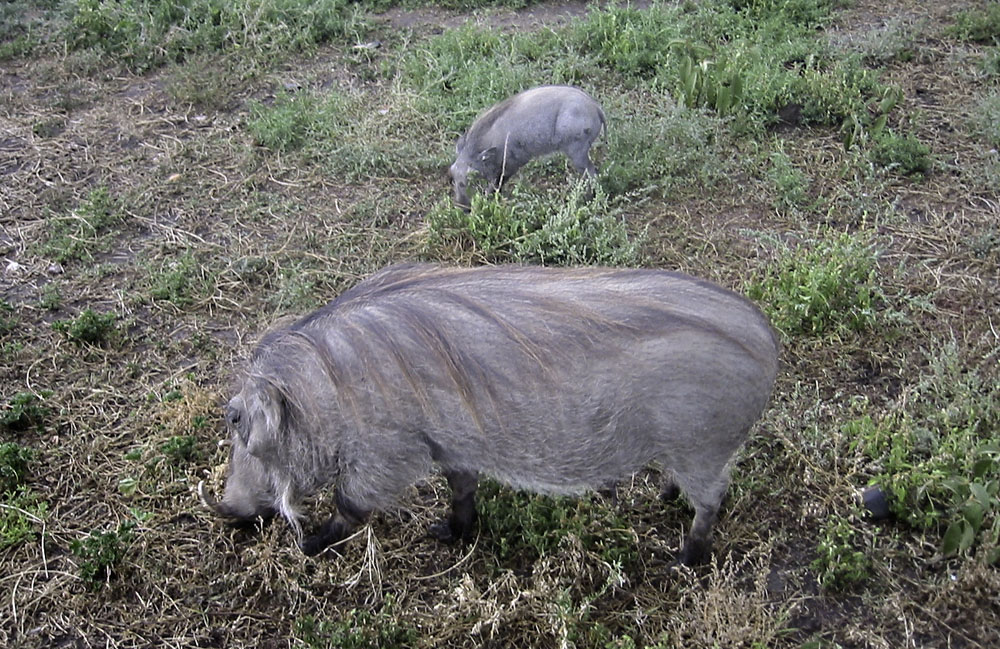Game drives in Ol Pejeta are big fun.
If you go anywhere in Africa where they have rhinos, the first thing you will learn is that a Black Rhino isn’t black and a White Rhino isn’t white – they’re both gray. They have different habits and temperament – Black Rhinos are considered more aggressive and less sociable – but the different names relate to their feeding habits and the effect that has on the shape of their mouths (or vice versa depending on your stand regarding chickens and eggs). White Rhinos graze like cattle and have a wide, somewhat square, mouth. Black Rhinos feed on brush and have a narrow mouth. One story is that the spoken English word “wide” was misunderstood as “white”, and Wikipedia claims that it was due to a mistranslation of the written Dutch word “wijd”, which means wide. Take your pick, but Wikipedia is also promoting the idea that the two species should be referred to as either Square-lipped or Hook-lipped Rhinos. Good luck.
Our Black Rhino encounter began with me informing our group, “Rhino on the left.” It was in full gallop and going our direction parallel to the one lane dirt road we were on, and as it turned out, was charging a vehicle coming at us from the other direction. There followed a frantic attempt by our driver to back up fast enough to allow the approaching vehicle room to move away from the rhino, which had made a u-turn onto the road and was mock-charging them from behind. By moving farther away with each new charge the other vehicle was able to convince the rhino that he (or she) was dominant, and that was all that was needed to diffuse the situation. I was so awestruck by the whole incident that I didn’t even attempt a photo (and wasn’t in the right position anyway), so this shot is borrowed from another member of our group.
The giraffe appear to be in paradise in Ol Pejeta, with tender Acacia leaves to nibble on as far as the eye can see. However, it takes a long and talented tongue and a lot of patience to get to the edible parts of these Acacia, due to their thorny defense system.
There are so many types of tree and brush that are included under the term “Acacia” it is worth questioning whether Acacia are the only trees with thorns, or whether simply having thorns is enough to be considered an Acacia. Judging from information found on Wikipedia, the question may be backwards, and the logic is hard to follow: “This name derives from the Greek word for its characteristic thorns…” “Many non-Australian species tend to be thorny, whereas the majority of Australian Acacias are not.” “…the genus was then divided into five, with the name Acacia retained for the Australian species…” So, the non-thorny Australian plants are going to retain a name which derives from the Greek word for thorny? Regardless, this particular species in Ol Pejeta presents another hazard for diners: Bite into one of the pods and you may find yourself with a mouthful of stinging ants.
The intensity of activity on this former cattle ranch provides numerous research opportunities – everything from monitoring the success of the Acacia’s defense mechanisms in the face of heavy “browsing” to the interaction between domestic cattle and zebra. Just the titles make interesting reading on the Ol Pejeta Conservancy Research Results web page.
The nearby Mount Kenya Safari Club, founded by William Holden in the 1950s, was the starting point for today’s Mount Kenya Wildlife Conservancy; and the William Holden Wildlife Foundation was started by Stefanie Powers after his death.
William Holden and Stefanie Powers (and numerous associated stars of Hollywood movie fame) are some of the high profile sources of private contributions that have flowed into this area over several generations to support conservation of the natural wonders to be found here. Whatever aboriginal peoples inhabited the area, the Masaai displaced the local population as recently as the 17th century, and were themselves forced out by the Europeans in the 19th century.
The Ol Pejeta Conservancy was a ranch when it was owned by Adnan Kashoggi, considered the richest man in the world during his time in the area. The influence of major private wealth may have excluded the local population from moving back into these areas under the pressure of population growth after independence, and that exclusivity might be seen as an unfair and socially reprehensible remnant of the days of colonial rule – but it was certainly a fortunate circumstance for the wildlife of Kenya.
Time and budget prevented a return visit to Ol Pejeta on our second trip, but that omission may be part of a growing list of reasons for a third safari in Kenya.
The next overnight stop on our very luxurious tour took us to the Mount Kenya Safari Club, but stops we made en route in the nearby town of Nanyuki gave us some of our best experiences with the people of Kenya.
[hana-code-insert name=’Image Bottom Right’ /]Kenya Travel – Page One
Page 2 – Kenya Safari – Amboseli National Park
Page 3 – Aberdare National Park – The Ark
Page 4 – Ol Pejeta Conservancy – Sweetwaters Tented Camp
Page 5 – You Are Here
Page 6 – Nanyuki – Mount Kenya Safari Club
Page 7 – Kenya Safari – Masai Mara National Reserve
Page 8 – Kenya Safari – Masai Mara Wildlife
Page 9 – Masai Mara – People and Trees
[hana-code-insert name=’Bottom Inline Links’ /]





If you would like to comment on this page, please use the form directly below.
To post a new topic, or submit your own photos, use the “Click here for Comments” link at the bottom of the page, and read the first post.